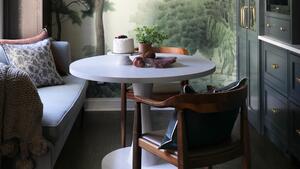How to design sustainably is a topic on everyone’s minds. It’s everywhere from the debate on eco-friendly appliances to the rise in circularity. So, we asked 12 industry pros—Andrey Anisimov, Mattia Biagi, Julie Anne Burch, Sarah Jefferys, Summer Jensen, Victoria Karieva, Steve Mulholland, Stacy Paetzel, Janice Parker, Vani Sayeed, Ashley Wainscott and Susan Wintersteen—what environmentally conscious practices they implement in their work.
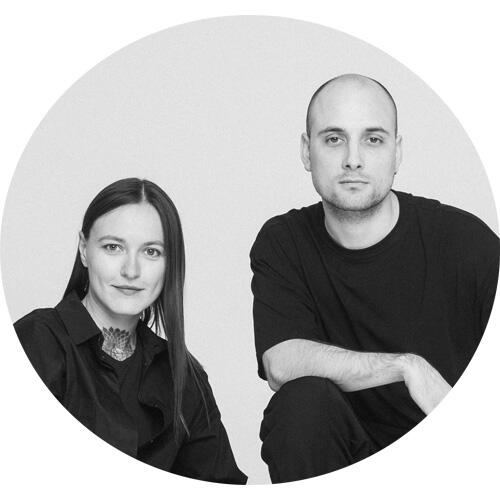
Holistic Approach
“From conceptualization to execution, and even in our interactions with clients, we prioritize eco-conscious practices. Our affinity for vintage extends beyond mere aesthetics; it embodies our commitment to giving old items new life, infusing modern interiors with timeless accents rich in history and significance. We incorporate furniture crafted from recycled plastic or marble, and we are actively working on a collection of armchairs fashioned from reclaimed fabrics. We prioritize quality bases such as eco-friendly paints and sustainable parquet flooring, mindful of their impact on both human health and the environment. In our global projects, we advocate for local sourcing to minimize transportation emissions and support regional economies. With a collective dedication to sustainable practices, we approach each project with purpose, enriching spaces while preserving the planet for future generations.” —Victoria Karieva and Andrey Anisimov, Between the Walls, Kyiv, Ukraine

High Priority
“We prioritize sustainability by actively seeking sustainable options for our clients whenever they are available. Whether it’s recommending eco-friendly materials, energy-efficient solutions or ethical sourcing practices, we strive to incorporate environmentally conscious choices into our operations and recommendations. By integrating sustainability into our approach, we aim to minimize our ecological footprint and contribute positively to environmental stewardship while meeting the needs of our clients.” —Julie Anne Burch, New York

Collaboration Is Key
“For all of our projects, we strive to collaborate with brands that prioritize sustainability and quality. For example, for this year’s Salone del Mobile, we’re developing a kitchen suite in collaboration with TM Italia, whose production employs structures crafted from renewable raw materials sourced from a certified-responsible supply chain. This ensures that the materials originate from responsibly managed forests, adhering to high standards of environmental protection. Additionally, for our new space in Los Angeles, we are partnering with brands that have a strong sustainability point of view, such as Alkemis, whose mineral paint not only is plasticizer-free but also promotes wellness with its quartz binder and all-natural pigments.” —Mattia Biagi, MC+ Design Studio, Los Angeles
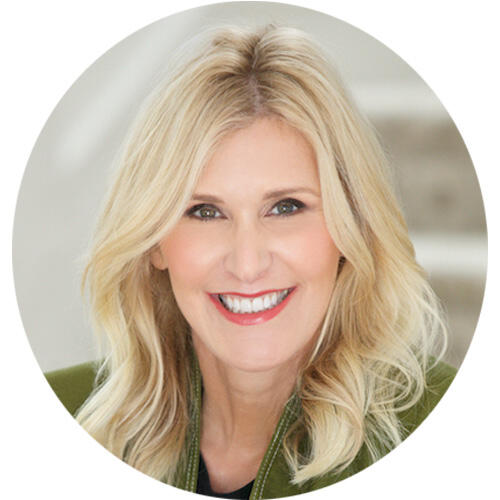
Au Naturel
“We prioritize using natural stones, natural wood floors and cabinets, Belgian linens, and wool rugs. These materials not only have a lower environmental impact, but they also add a touch of elegance and charm, while creating a healthy and organic living space.” —Susan Wintersteen, Savvy Interiors, San Diego

Education First
“On a team level, we discuss sustainability and our footprint regularly, as well as changes that we can make to our processes that will have an impact. We donate items that are removed from our projects to Habitat for Humanity ReStore to try to give items a second life. We incorporate more cleanings to keep floorcoverings usable for as long as possible, and we also incorporate reusable mats to extend the life of our floorcoverings. We have frequent air filter changes in a home during construction, and we are starting to build into our processes the use of air purifiers. We logistically work efficiently with our schedules to keep unnecessary emissions and material waste down. We have started working to educate our team and clients on sustainable building products, how we can reduce waste and increase recycling, as well as small things we can be doing, such as radon tests. This will continue to be a big initiative for us in the coming years.” —Ashley Wainscott, Simply Home, Austin, Texas
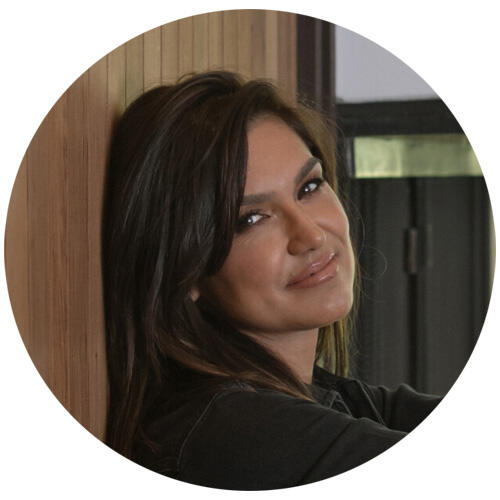
Giving Back
“On the most basic level, we specify green materials, non-VOC, from local sources when possible, and we give priority to purchasing from underdeveloped areas of the world or to companies that show community support. At the back of my drawings, I provide an index of green building substitutes, from formaldehyde-free plywood to magnesium oxide panels to eco-mastic for mirrors. I also encourage clients to use gray- and black-water systems and low-flow plumbing fixtures. I am also a big proponent of passive lighting design systems focused on natural and circadian-rhythm lighting. I love purchasing local—finding quarries within 500 miles of the job site, using local artisans for furniture. It builds a strong, local circular economy. I also donate to replace all of the timber used on my projects with One Tree Planted. Fifty trees are cut down for every 1,000 square feet of home, so I replace what we have taken. As an interior designer, I think finding an architect who’s on board with sustainability is critical and will affect the way the home is conceptualized and built.” —Summer Jensen, Hawk & Co., Los Angeles

Reduce, Reuse, Recycle
“We encourage our clients to reupholster and refinish their existing furniture as opposed to purchasing new. We always try to donate cabinetry, especially full kitchens, to be reused and have worked with Renovation Angel and Habitat.org for furniture and furnishings. Depending on the project, we often design furniture and custom items as well. We use local craftsmen and artists to fabricate these. We also try to source antiques or vintage items and furniture locally. Also, we always try to return samples to the designated showrooms so they can be recirculated. And finally, we actively try to educate our team on sustainability solutions and innovations to apply to our practice.” —Vani Sayeed, Vani Sayeed Studios, Newton, Massachusetts

Outdoor Tips
“As landscape architects, we’re fortunate to be able to weave sustainable practices throughout our work. It’s not always something our clients ask for initially on their wish list, but they are typically very open to and often excited about it. Our plant palette is composed mostly of native plants, preferably indigenous to the area we’re working in. We are also very intentional about including plants and freshwater sources that provide food and habitat for birds, bees and other beneficial insects. On the hardscape side of things, we seek out local and reclaimed materials whenever possible, as well as opportunities to repurpose existing materials where they no longer meet homeowners’ needs. When specifying new materials or furnishings, it’s important to understand whether the wood has been harvested sustainably, or if it’s been treated with chemicals. In addition to sustainable practices during the design and implementation phases, we encourage clients to maintain their landscapes sustainably, without chemicals. A relatively new trend we’re excited to see catching on in the industry is leaving organic matter, such as leaves, in the garden and reusing it as mulch in the borders. I know I’d much rather see a leaf or two on the lawn than hear a leaf blower!” —Stacy Paetzel, Marshall Paetzel Landscape Architecture, Mattituck, New York
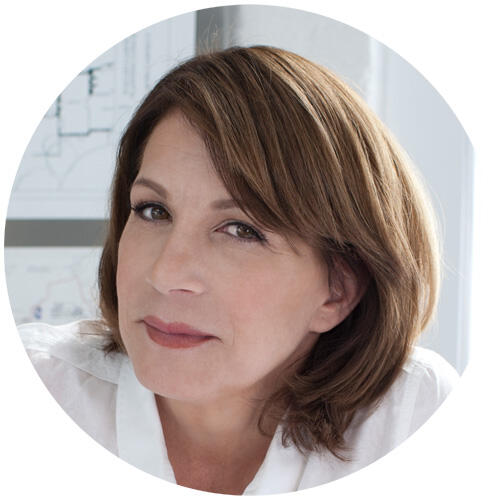
Sticking With Nature
“We work to make outdoor living designs that integrate native plants and habitat creation, attract wildlife, use design strategies that regenerate, and fulfill zero-runoff goals to directly and aesthetically encourage groundwater recharge. The goal is to make the right choices both aesthetically and functionally. Vibrant and rich tones of flowers and plants, like deeper yellows and purple blues, will attract pollinators—and satisfy your eye. ‘Impervious vs. Permeable’ is a key concept in landscape sustainability. An impervious surface (think of solid concrete/stone terraces or asphalt driveways) obstructs water from soaking into the ground below. The water then drains off and adds to the runoff headed for the stormwater system. Permeable surfaces allow water to soak into the soil below. Our favorite strategy is to use gravel paving—beautiful and sustainable. Besides looking fabulous, a meadow ‘no mow’ lawn differs from a traditional lawn in that meadows are made up of native grasses and plants, and lawns are made up of grasses that are there for their hardiness and may not be (and usually are not) native to your area. [Meadow lawns add] wildlife habitat for birds and beneficial insects, while causing no toxic runoff into water bodies—and ending weekly mowing.” —Janice Parker, Janice Parker Landscape Architects, Greenwich, Connecticut

Life-Cycle Enhancement
“As a residential design practice celebrating 35 years in business, we believe one of the most effective approaches to sustainability is through ‘life-cycle enhancement.’ We make every effort to imbue our designs with materials and details that age gracefully with less maintenance or need for more frequent replacement. Exploiting the life cycle of a home often involves selecting decay-resistant materials on the building exterior and interior finish materials with fashion and durability as priorities. We have found this approach to effectively delay the need for material replacement whether through damage or taste.” —Steve Mulholland, GTM Architects, Bethesda, Maryland

Pros to Passive
“Investing in sustainable measures can feel daunting and confusing for homeowners, but it is a key pillar in our design practice. As such, we are dedicated to educating our clients on the many benefits of energy-efficient design and Passive House standards. We guide our clients on ways to make their homes more efficient with increased insulation, airtight construction, and green HVAC systems to reduce the need for heating and cooling outputs, reducing the carbon footprint of the home. Designing and building more energy-efficient—or ideally, passive—houses can reduce utility expenses by 70 percent and create healthier environments, directly affecting our psychological well-being. We carefully source project materials in line with our philosophy. We love Ikon windows and doors, for instance. They’re custom-made, high-quality and designed for Passive House construction with triple-pane windows and doors that are highly energy-efficient. We like to recommend Navien tankless water heaters as well, which use less energy than traditional tanks because they only release hot water on-demand as opposed to storing and maintaining it. Appliance-wise, Bosch offers energy-efficient options that are good quality, good-looking and reasonably priced. In addition, we aim to use locally sourced materials throughout our projects to help curb emissions wherever possible.” —Sarah Jefferys, Sarah Jefferys Architecture + Interiors, New York





















